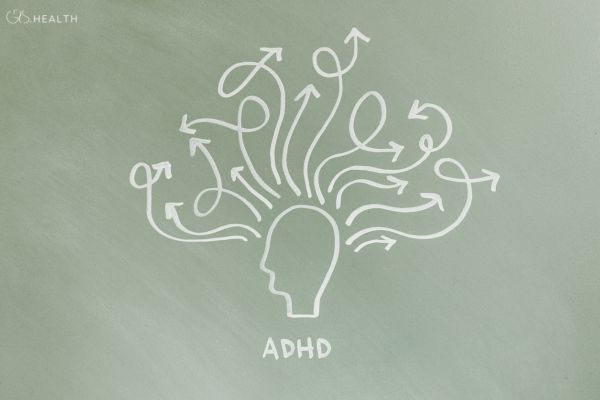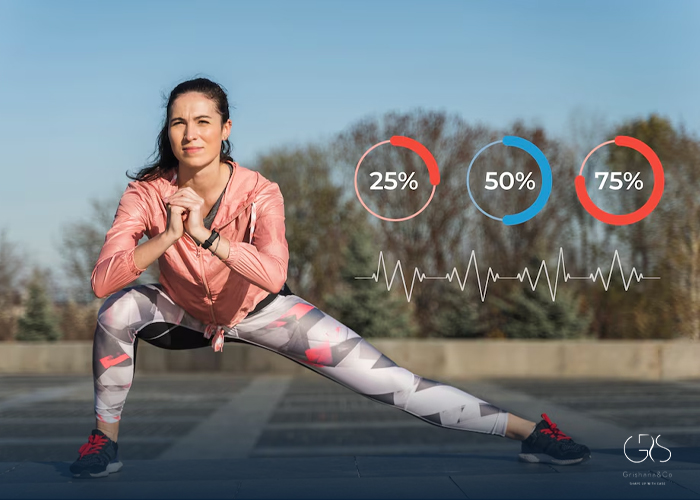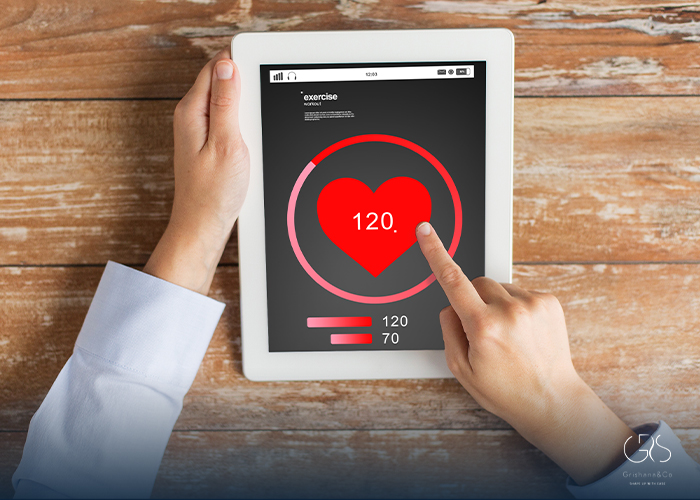The question “does blue light cause headaches?” doesn’t have a universal yes/no answer because “headache” is an umbrella term. In migraine, light—especially shorter wavelengths around cyan/blue—can worsen pain and photophobia via melanopsin pathways in intrinsically photosensitive retinal ganglion cells (ipRGCs). In non-migraine screen discomfort, the main drivers are usually visual behavior and display characteristics rather than blue light per se.
The biology: why blue light can hurt in migraine
Light affects the brain through rods and cones (for vision) and ipRGCs (for non-image-forming responses like circadian timing and light aversion). ipRGCs contain melanopsin, most sensitive near ~480 nm (blue-cyan). In migraine, signals from ipRGCs are amplified and project to pain-processing regions, helping explain photophobia and why certain wavelengths feel harsher. Experimental and clinical work supports this ipRGC-driven pathway.
Recent studies continue to link ipRGC hypersensitivity with migraine mechanisms, including interactions with calcitonin gene-related peptide (CGRP) and possible modulation by other cone inputs.
So in migraine, does blue light cause headaches? For many patients, blue-rich light can trigger or intensify attacks, though individual sensitivity varies.

Beyond color: flicker, refresh rate, and contrast
If you don’t have migraine but screens bring on headaches, flicker is a prime suspect. LEDs (including many screens and room lights) can flicker through pulse-width modulation (PWM) or power-line artifacts. Even invisible (high-frequency) flicker can provoke headache, eyestrain, and malaise in sensitive people; visible flicker carries well-documented risks. Classic and newer reviews highlight these effects and advise minimizing flicker exposure.
High contrast, glare, and over-bright displays also elevate visual stress and can culminate in headaches—regardless of blue content. In practical terms, a stable, non-flickering display at comfortable luminance often helps more than filtering blue alone. So, does blue light cause headaches? Often it’s display behavior more than spectral color.
Digital eye strain ≠ blue-light damage
Professional ophthalmology guidance is clear: digital eye strain stems from how we use devices (reduced blink, prolonged near focus, poor ergonomics), not from blue light “damaging” the eye. Large reviews and Academy statements also find little evidence that off-the-shelf blue-blocking glasses relieve typical eye-strain symptoms.
Thus, for everyday users asking “does blue light cause headaches?”, the more accurate refrain is: fix habits first—breaks, posture, lighting—before reaching for blue filters.
What the evidence says about lenses and filters
Do blue-blocking glasses work?
A 2023 Cochrane-style systematic review found low-certainty evidence and no consistent benefit of blue-light–filtering spectacle lenses for eye strain or sleep; some adverse effects (including headache) were inconsistently reported. The American Academy of Ophthalmology likewise does not recommend blue-blocking lenses for digital eye strain.
What about FL-41 and other migraine-specific tints?
In migraine, specialty tints (e.g., FL-41) that reduce ipRGC-stimulating wavelengths show promising results. Classic pediatric data and subsequent work suggest reductions in photophobia and, in some cases, migraine frequency—though high-quality adult RCTs remain limited. Recent overviews and trials continue to explore ipRGC-targeted filters and notch coatings. This is not the same as generic blue-blockers marketed for eye strain.
Green light: an emerging option for migraine
Multiple studies—ranging from lab experiments to real-world cohorts—report that narrow-band green light exposure can reduce migraine pain intensity, frequency, and photophobia in subsets of patients. Clinical trials are ongoing, but the trend is cautiously optimistic. If you live with migraine and keep asking does blue light cause headaches, you may benefit more from adding controlled green light than from simply subtracting blue.
When does blue light cause headaches?
During migraine or interictal photophobia: Blue-rich light can intensify discomfort via melanopsin/ipRGC signaling. Does blue light cause headaches here? Frequently yes, as part of a broader light sensitivity syndrome.
Under poor lighting and display conditions: High brightness, flicker, glare, and contrast mismatches can provoke headaches in many people; the blue component is often secondary.
At night: Blue-rich light near bedtime disrupts melatonin and sleep; sleep loss and circadian disruption are migraine triggers for some. That can make it feel like does blue light cause headaches, when the chain is blue light → poor sleep → headache.

Does blue light cause headaches in kids and teens?
Children and adolescents with migraine can be light-sensitive, and small studies suggest certain tints may help. For otherwise healthy students with screen use, breaks, ergonomics, and flicker control matter more than blue filtering. As always, any child with recurring headaches warrants a professional evaluation.
Practical answers to “does blue light cause headaches?”
1) First, rule out common non-blue causes
Uncorrected refractive error (you need glasses or an updated Rx)
Dry eye from reduced blink rate during screens
Neck/shoulder strain and poor posture
Flicker-heavy displays or lighting (low PWM duty cycles, low refresh rates)
Addressing these often resolves “screen headaches” without altering blue content.
2) Optimize your display and environment
Brightness: Match screen luminance to the room; avoid “torch mode.”
Flicker: Prefer devices with DC-dimming or high-frequency PWM; raise brightness above ranges where PWM is most aggressive.
Text/rendering: Increase font size and contrast thoughtfully; avoid stark black-on-white glare in dim rooms.
Distance & posture: Keep screens ≈50–70 cm from eyes; adjust chair/monitor height.
These steps often quiet the nagging “does blue light cause headaches” worry—because comfort improves even without blue filtering.
3) Follow the 20-20-20 rule
Every 20 minutes, look 20 feet away for 20 seconds; blink intentionally, and consider a humidifier or preservative-free tears if dry. The AAO emphasizes breaks and behavior—not blue light—as the remedy for digital eye strain.
4) If you have migraine or photophobia
Consider migraine-oriented tints (e.g., FL-41 or ipRGC-targeted notch filters) rather than generic blue blockers.
Trial narrow-band green light (under clinician guidance) for attacks or prevention.
Keep a light-trigger diary to identify spectra/brightness that aggravate you.
These strategies directly tackle the mechanism behind “does blue light cause headaches” in migraine.
What about “blue light damage” to the eye?
Another reason people ask does blue light cause headaches is worry about retinal damage. Current human data do not implicate everyday screen blue light as a retinal hazard at typical exposures. Concerns come mainly from high-intensity experiments and animal or cell studies; reviews stress that device levels are far lower. This doesn’t mean blue light is irrelevant—just that headaches from screens are more about comfort and neurology than tissue injury.
A clinician’s checklist: resolving real-world “screen headaches”
Headache history: timing, triggers (including light), migraine features, sleep patterns.
Vision check: refraction, binocular vision, accommodation; treat dry eye.
Lighting audit: room fixtures (flicker source?), monitor model/refresh rate/PWM, brightness habits.
Behavior plan: 20-20-20, scheduled micro-breaks, posture, font scaling.
Targeted optics if migraine: trial FL-41/notch filters; consider green-light protocols.
Reassure about blue blockers: generic “blue-blocking” for strain isn’t evidence-based; invest instead in flicker-stable tech and better habits.
FAQs
So… does blue light cause headaches?
For migraine-prone individuals, blue-rich light can worsen pain and sensitivity; for most other people, no—the drivers are flicker, glare, and prolonged near work.
Are blue-blocking glasses worth it?
Not for standard digital eye strain; evidence is inconclusive to negative. For migraine, specialized tints (e.g., FL-41) are more promising than generic blue blockers.
Is nighttime blue light “giving me headaches”?
Blue light at night can delay melatonin and disrupt sleep; poor sleep itself can trigger headaches. Managing timing and brightness helps.
What single change helps most?
For many, it’s switching to a low-flicker display and dialing in comfortable brightness—not a blue filter.
Conclusion
If you’re still wondering does blue light cause headaches, remember: context is everything. In migraine, blue-rich light can be a real trigger via melanopsin/ipRGC pathways. In everyday screen use, flicker, brightness, and behavior dominate. Start by fixing the environment and habits; if migraine is in the picture, talk with a clinician about targeted tints or narrow-band green light strategies—approaches aligned with how light actually interacts with the nervous system.
Sources
- American Academy of Ophthalmology, Digital Devices and Your Eyes
- PUBMED National Library of Medicine, Blue-light filtering spectacle lenses for visual performance, sleep, and macular health in adults
- Sciencedirect, Targeting the intrinsically photosensitive retinal ganglion cell to reduce headache pain and light sensitivity in migraine: A randomized double-blind trial
- Tandfonline, Assessment of the effect on the human body of the flicker of OLED displays of smartphones











